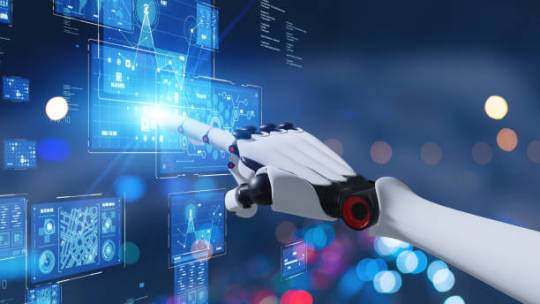Don't wanna be here? Send us removal request.
Text
A Beginner’s Guide to Robotics and Automation: How Technology is Shaping Our Future

Technology continues to reshape the way we live and work, and at the forefront of this transformation are two powerful forces: robotics and automation. From automated assembly lines to robots assisting in surgeries, these innovations are impacting industries and households alike.
If you’re new to this topic, you might be wondering—what exactly do robotics and automation mean? And why are they becoming so essential in today’s world? In this guide, we’ll explore the basics, practical uses, advantages, challenges, and what the future holds.
Defining Robotics: The Brains and Brawn of Modern Machines
Robotics is the field that focuses on designing, building, and using machines—called robots—that can carry out tasks either autonomously or with minimal human guidance. These machines are programmed to perform specific actions and are often used to handle jobs that are repetitive, complex, or unsafe for people.
Robots vary widely in form and function. Some are small, like robotic vacuum cleaners, while others resemble humans or are part of large industrial systems. Most robots rely on sensors to gather information, processors to analyze it, and actuators to perform actions with precision.
Understanding Automation: Systems That Work Without Human Input
Automation refers to the use of technology to complete tasks without direct human involvement. It isn’t limited to robotics—it can include anything from basic control systems, like automatic lighting, to advanced software that manages complex operations.
Automated systems can be hardware-based, like machinery in a warehouse, or software-based, such as algorithms that sort emails or schedule meetings. These technologies increase speed, accuracy, and efficiency across various settings.
How Robotics and Automation Work Together
While robotics and automation are separate disciplines, they often function hand-in-hand. Most modern robots are part of automated systems that help complete tasks with minimal supervision. In factories, for instance, robotic arms are programmed to perform repetitive processes like welding or assembling products in sync with software systems that oversee production. The integration of both technologies enables businesses to operate with enhanced productivity, lower error rates, and greater scalability.
Top Benefits of Robotics and Automation
1. Boosted Productivity
Machines can run continuously without breaks, leading to higher output and faster completion of productivity..
2. Enhanced Precision
Automation reduces the likelihood of human mistakes, improving quality and uniformity in processes.
3. Cost Reduction
Over time, automating tasks cuts down on labor costs, minimizes errors, and reduces material waste.
4. Improved Safety
Robots can handle dangerous tasks like working with chemicals, lifting heavy items, or operating in hazardous environments.
5. Reliable Consistency
Automated systems deliver consistent results, which is critical in industries where uniformity is essential.
Practical Applications in the Real World
1. Manufacturing
Robots are commonly used for welding, assembling, painting, and inspecting products on production lines. Automation has streamlined operations, reduced defects, and improved overall efficiency.
2. Healthcare
From robotic surgical systems to automated drug dispensing, healthcare facilities are adopting technology to enhance patient outcomes and reduce human error.
3. Agriculture
Smart farming tools like GPS-guided tractors, drones for crop analysis, and automated irrigation systems help farmers manage resources more effectively.
4. Logistics and Warehousing
Warehouses use robotic systems and automated guided vehicles (AGVs) to sort, pick, and transport items. These tools are vital to fast-paced operations in e-commerce.
5. Everyday Life
Home automation products like robotic vacuums, smart thermostats, and intelligent lighting systems are making daily routines simpler and more efficient.
Challenges to Keep in Mind
Despite their many advantages, robotics and automation also bring a set of challenges that must be addressed:
High Setup Costs: Investing in automation infrastructure can be expensive, especially for startups or small businesses.
Job Displacement: Some worry that machines may replace human jobs, particularly in roles that are repetitive or labor-intensive.
Technical Complexity: Maintenance and repair of automated systems require specialized knowledge and skills.
Cybersecurity Threats: As more systems connect to the internet, they become vulnerable to hacking and data breaches.
What Lies Ahead: The Future of Robotics and Automation
As technologies like artificial intelligence (AI), 5G, and machine learning continue to evolve, robotics and automation are expected to become more intelligent, adaptive, and widespread.
Collaborative Robots (Cobots)
These robots are designed to work alongside humans, not replace them. They assist in tasks requiring a human touch and can be programmed to adapt to different environments.
Autonomous Vehicles
Driverless cars, delivery drones, and smart public transport systems are being tested and gradually introduced around the world, aiming to improve safety and efficiency.
AI-Powered Robotics
The integration of AI allows robots to learn from their surroundings and make decisions, making them more useful in healthcare, education, and customer service.
Conclusion: Embracing the Change
Robotics and automation are not just technological trends—they are powerful tools that are redefining how the world operates. Their impact spans from increasing productivity in factories to simplifying tasks at home.
To remain competitive and forward-thinking, individuals and organizations must stay informed, adapt to new tools, and consider the ethical implications of these technologies. Whether you’re a student curious about tech careers or a business leader exploring automation opportunities, embracing these changes is a smart move toward a more innovative and sustainable future.
1 note
·
View note